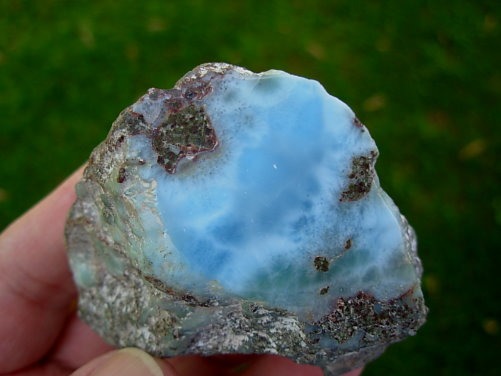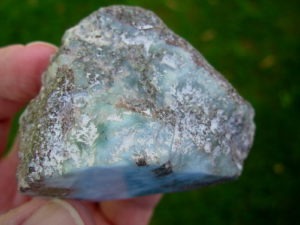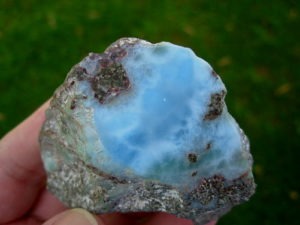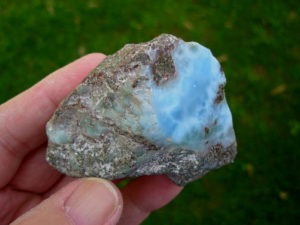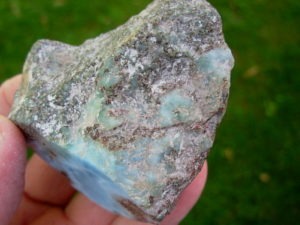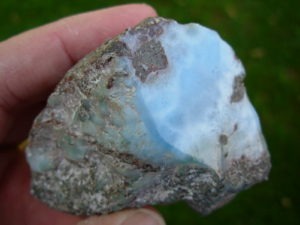Larimar
Larimar is a rare form of Pectolite, which was discovered in the 1970;s and is found only in the Dominican Republic. It has an extraordinary blue appearance, similar to the color of the ocean in tropical areas. The name Larimar comes from a combination of Larissa and Mar and was given to the stone by a Dominican who named the stone after his daughter Larissa and Mar, the Spanish word for Sea.
Below information is from http://en.wikipedia.org/wiki/Larimar
"The Dominican Republic's Ministry of Mining records show that on 23 November 1916 Father Miguel Domingo Fuertes Loren of the Barahona Parish requested permission to explore and exploit the mine of a certain blue rock he had discovered. Pectolites were not yet known in the Dominican Republic and the request was rejected. In 1974, at the foot of the Bahoruco Range, the coastal province of Barahona, Miguel Méndez and Peace Corps volunteer Norman Rilling rediscover Larimar on a beach. Natives, who believed the stone came from the sea, called the gem Blue Stone. Miguel took his young daughter's name Larissa and the Spanish word for sea (mar) and formed Larimar, by the colors of the water of the Caribbean Sea, where it was found. The few stones they found were alluvial sediment, washed into the sea by the Bahoruco River. An upstream search revealed the in situ outcrops in the range and soon the Los Chupaderos mine was formed.
Larimar is a type of pectolite, or a rock composed largely of pectolite, an acid silicate hydrate of calcium and sodium. Although pectolite is found in many locations, none have the unique volcanic blue coloration of Larimar. This blue color, distinct from that of other Pectolites, is the result of copper substitution for calcium. Miocene volcanic rocks, andesites and basalts, erupted within the limestones of the south coast of the island. These rocks contained cavities or vugs which were later filled with a variety of minerals including the blue pectolite. These pectolite cavity fillings are a secondary occurrence within the volcanic flows, dikes and plugs. When these rocks erode the pectolite fillings are carried downslope to end up in the alluvium and the beach gravels. The Bahoruco River carried the pectolite bearing sediments to the sea. The tumbling action along the streambed provided the natural polishing to the blue Larimar which makes them stand out in contrast to the dark gravels of the streambed."
Item # LAR05130247
Larimar Polished Face Display Specimen

Polished Face Larimar Display
This is an exceptional rough specimen of Larimar from the Dominican Republic with a single cut and polished face that measures 2 x 1.23" (5.2 x 3.1cm). This piece sits with the polished face angled for an excellent display view. The oceanic shades of blue are just brilliant, and the veining patterns are really nice. This was picked up on our last overseas rock hunting trip.
This piece weighs 6.5 oz or 0.4 lb (184g) and measures 2.5 x 2.1 x 1.79" (6.3 x 5.4 x 4.5cm)

